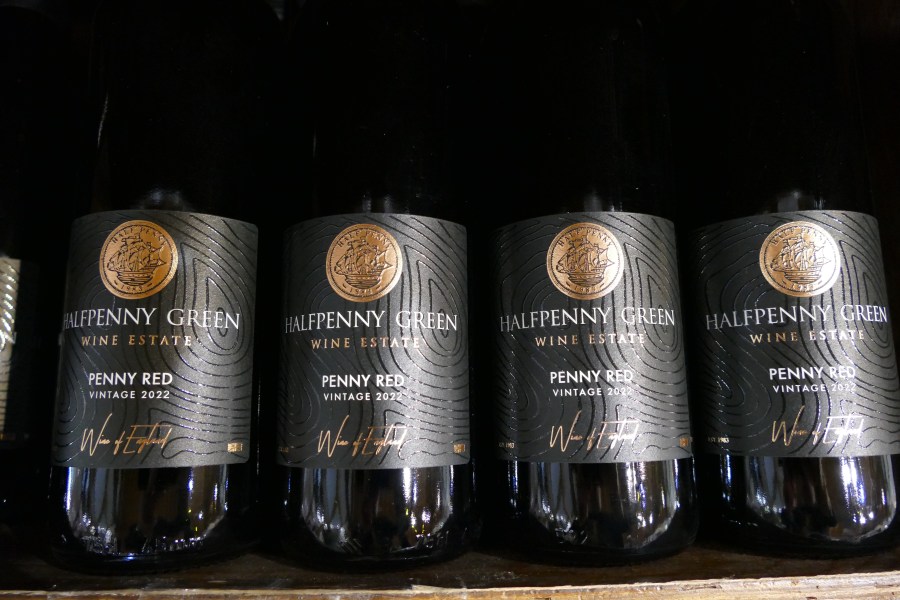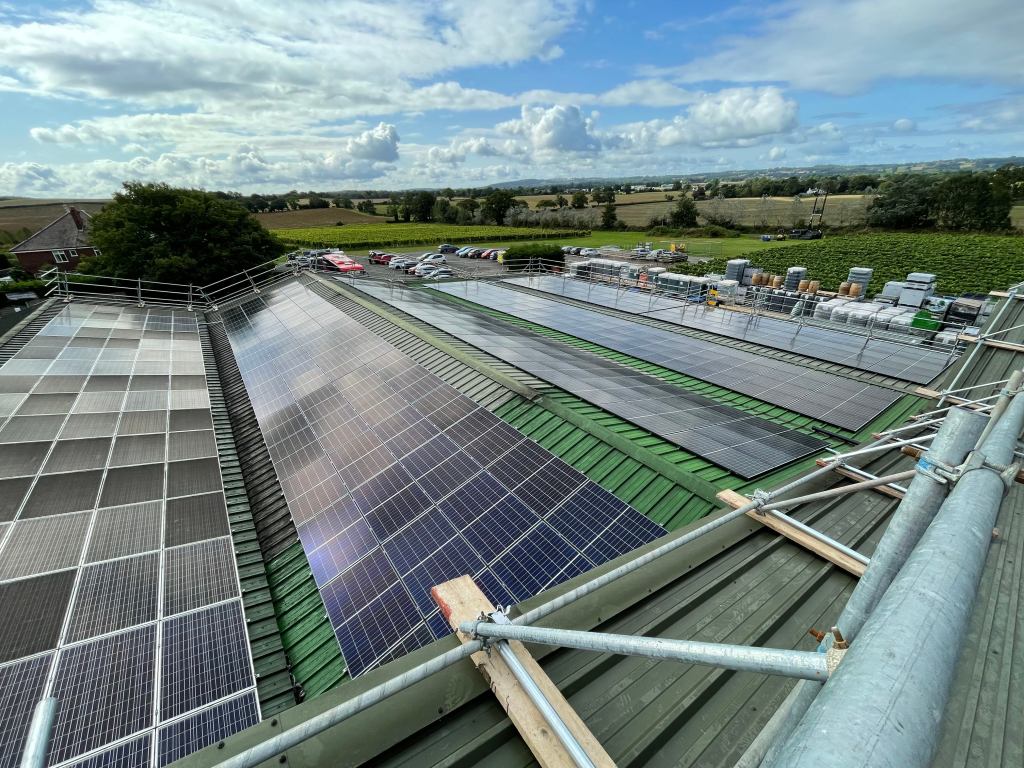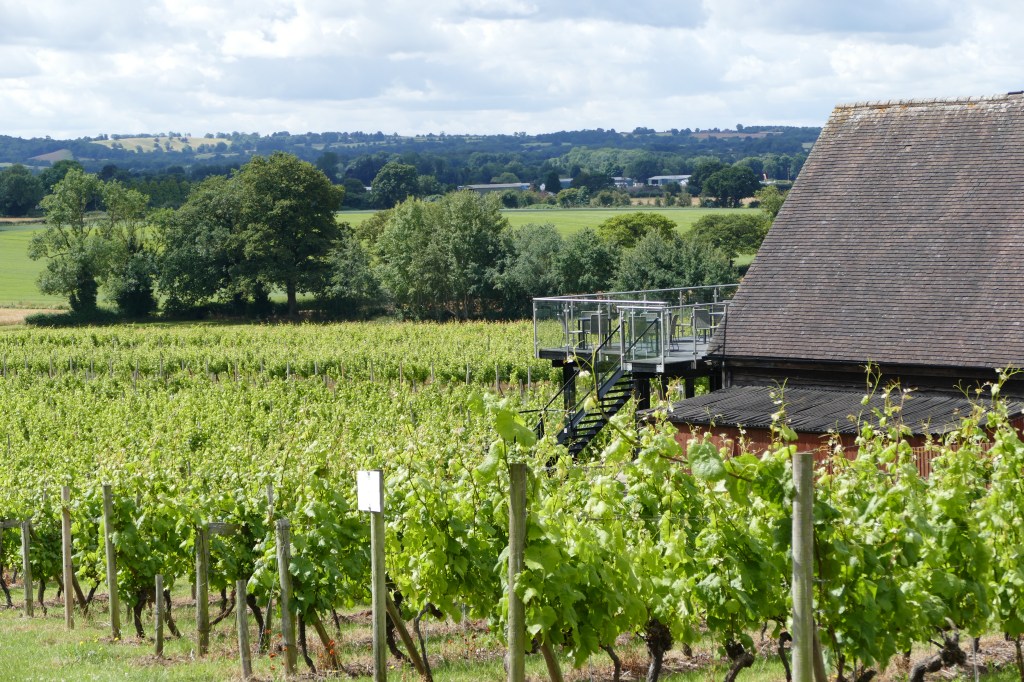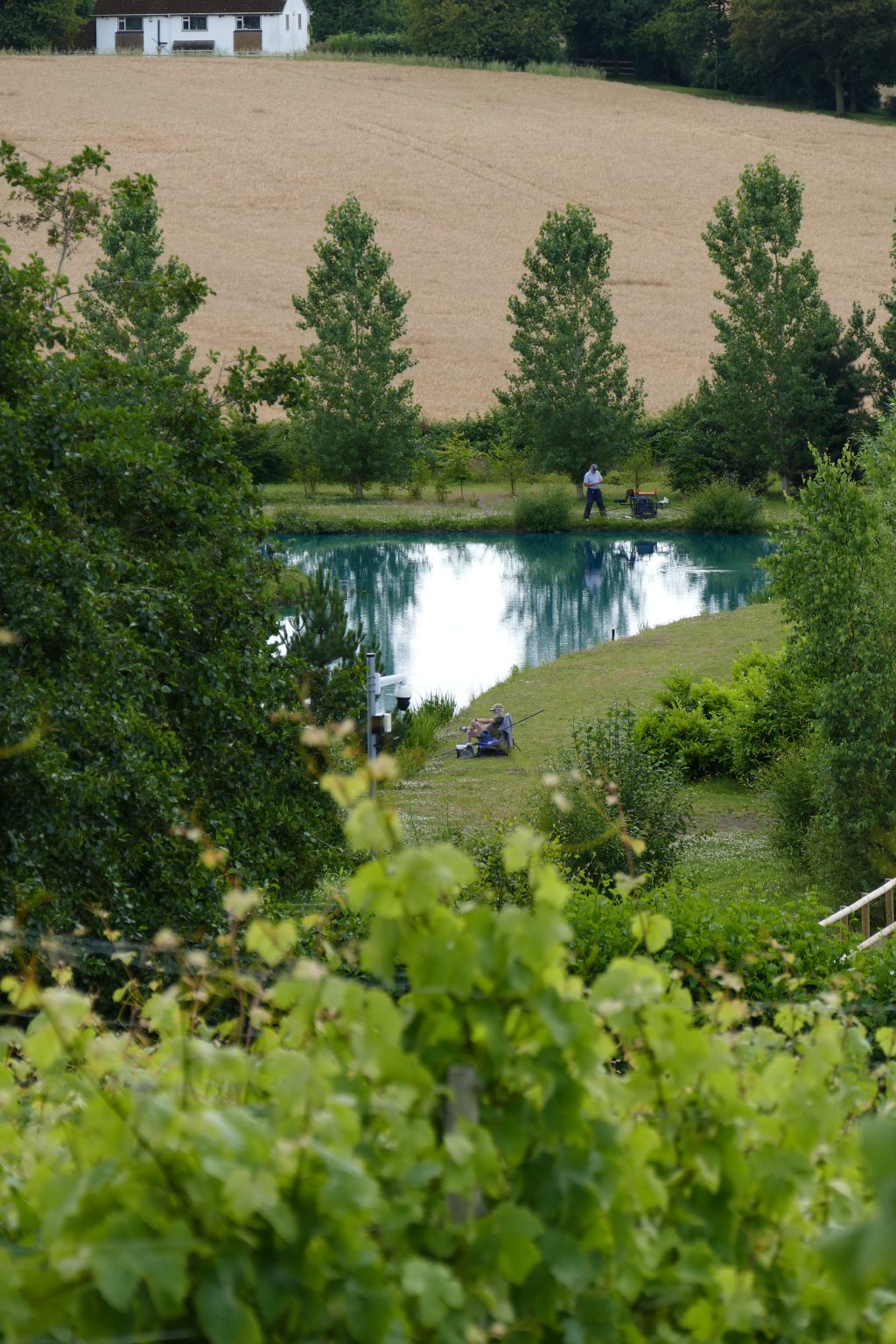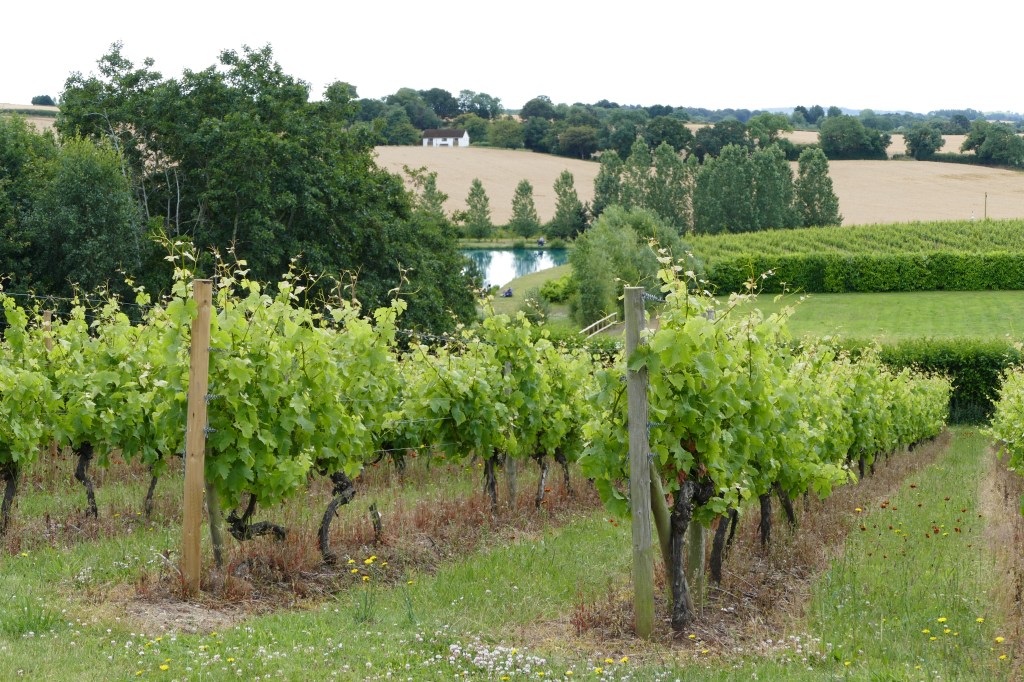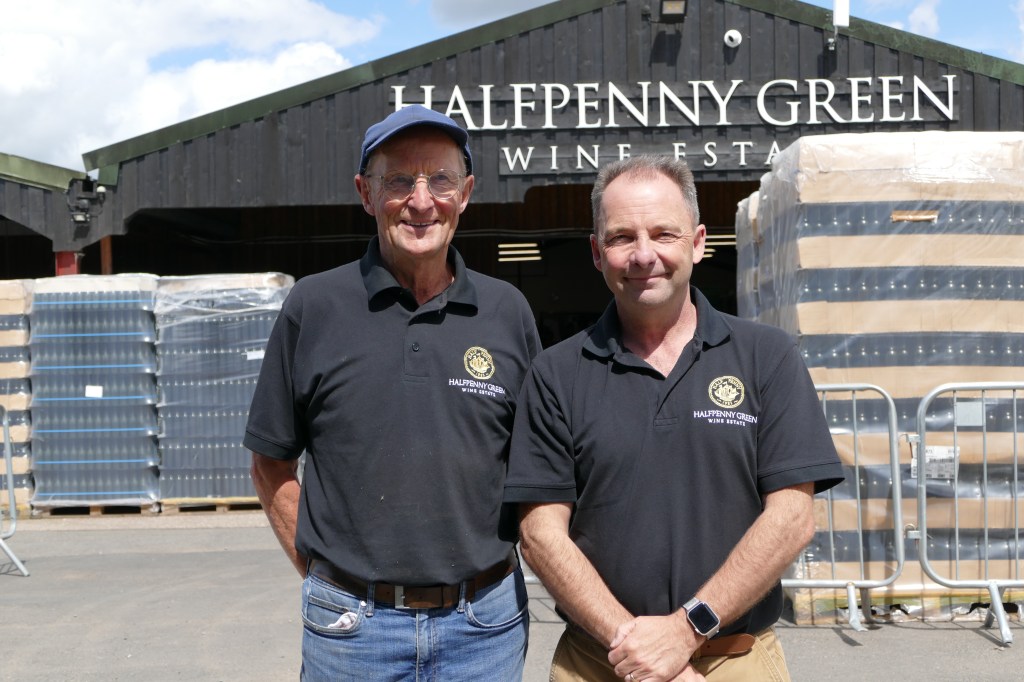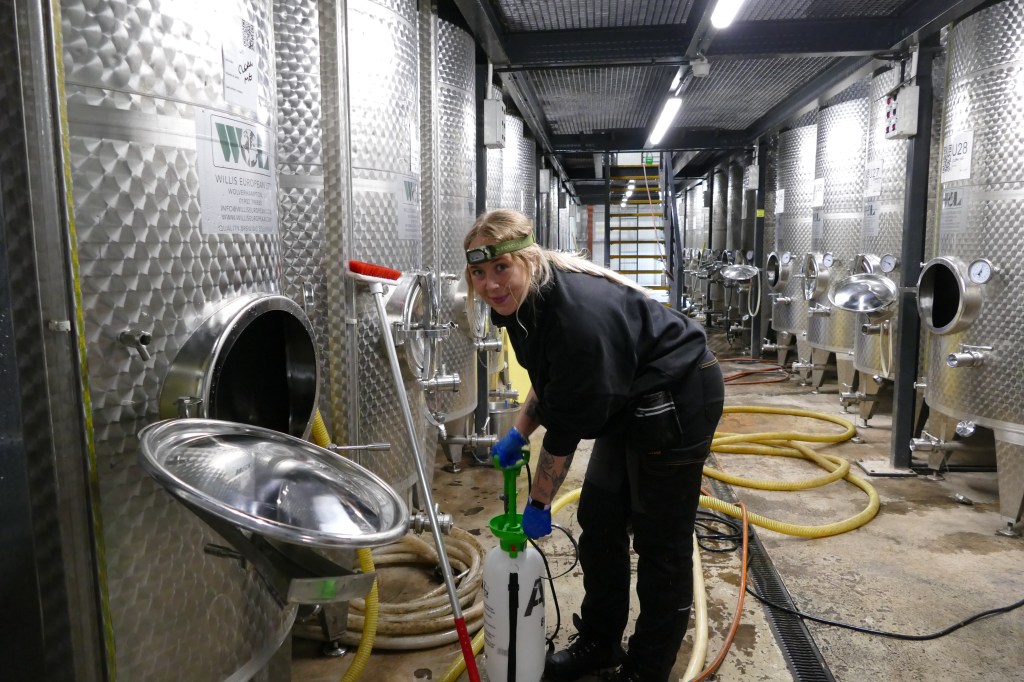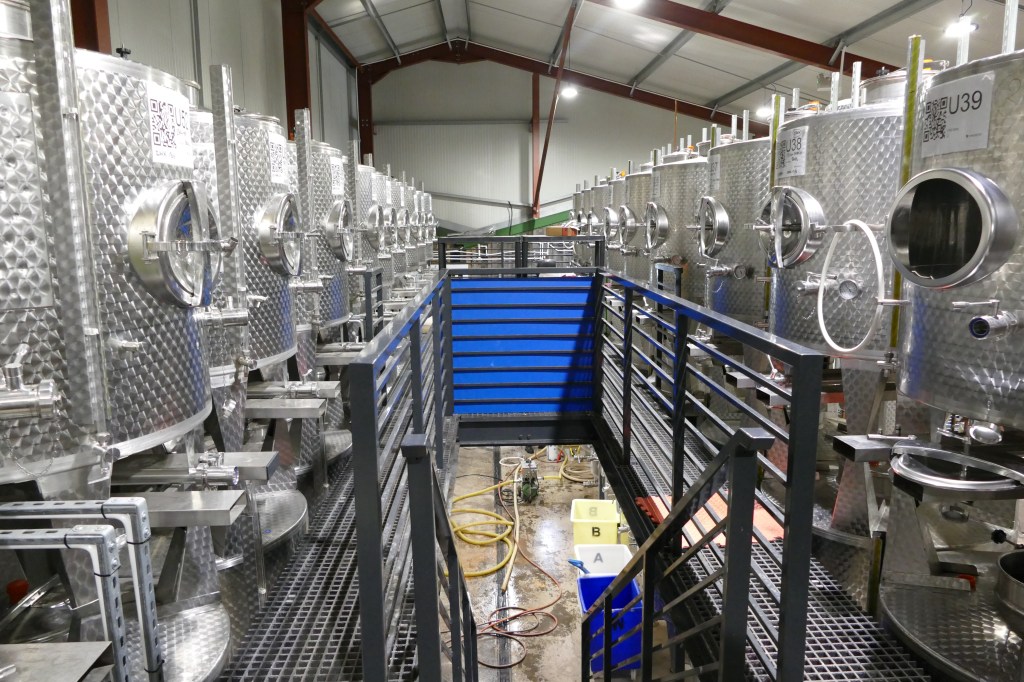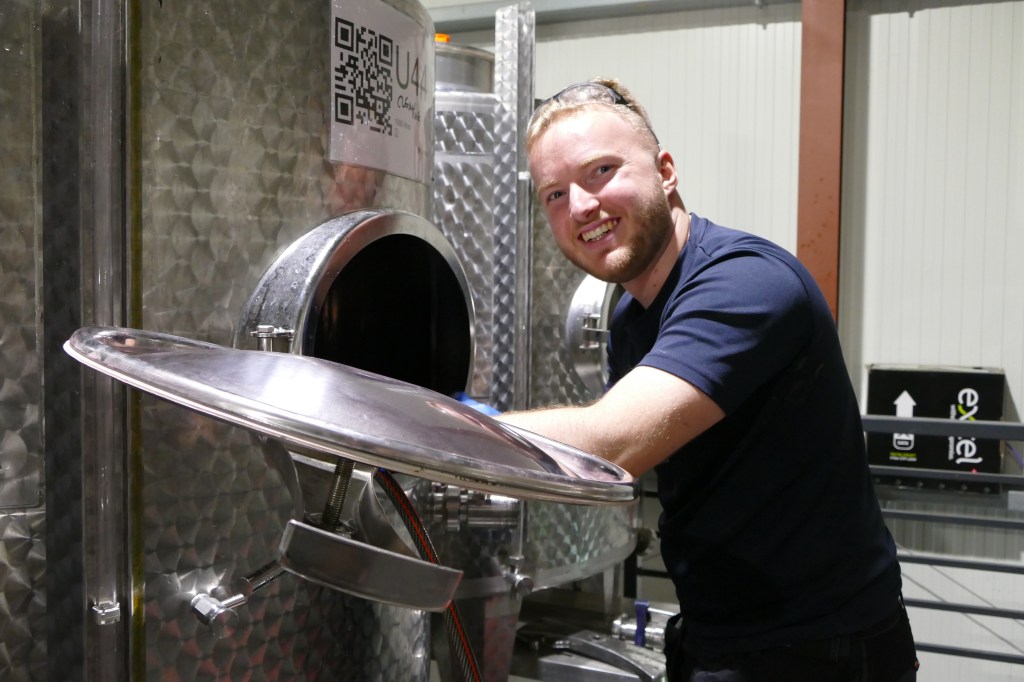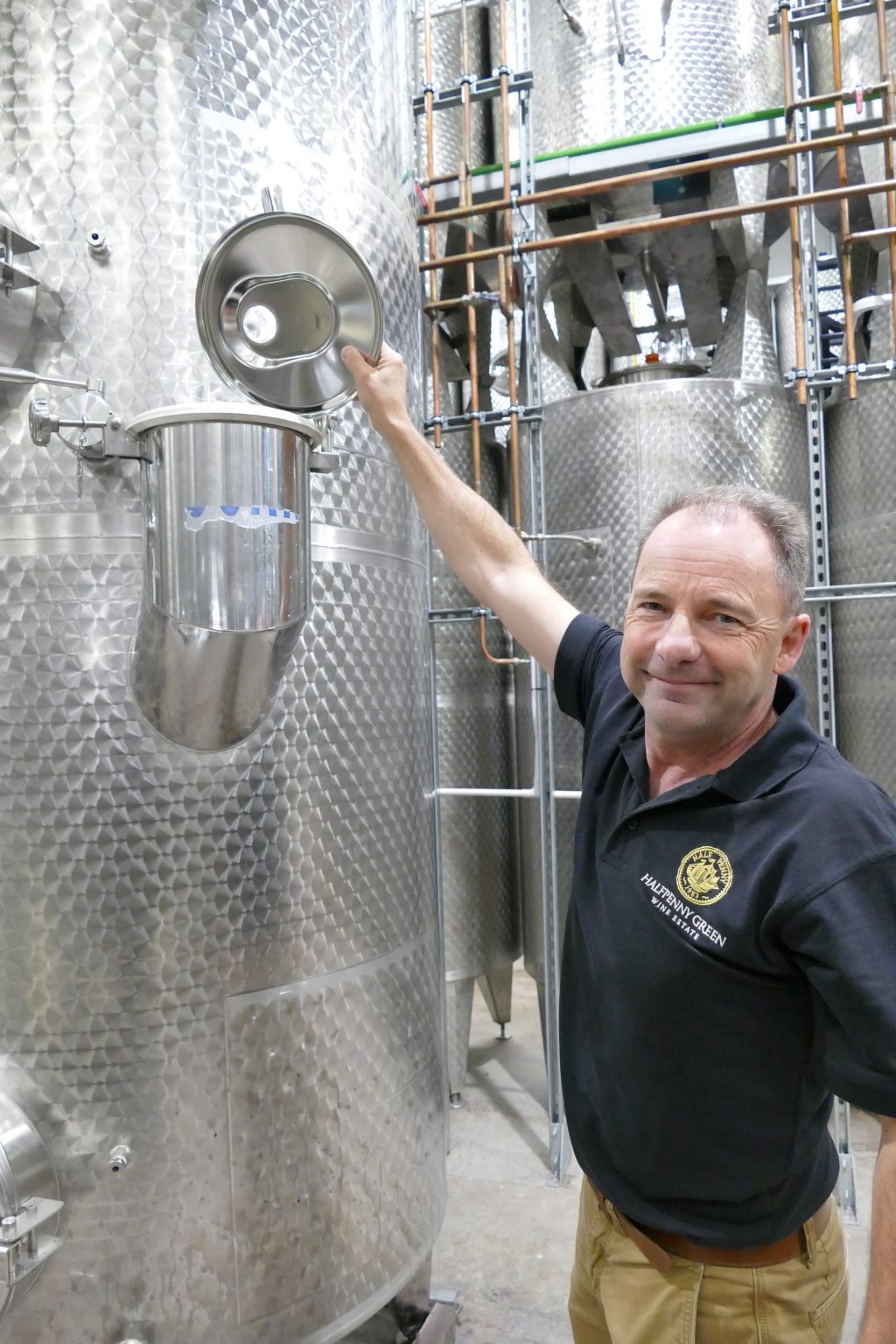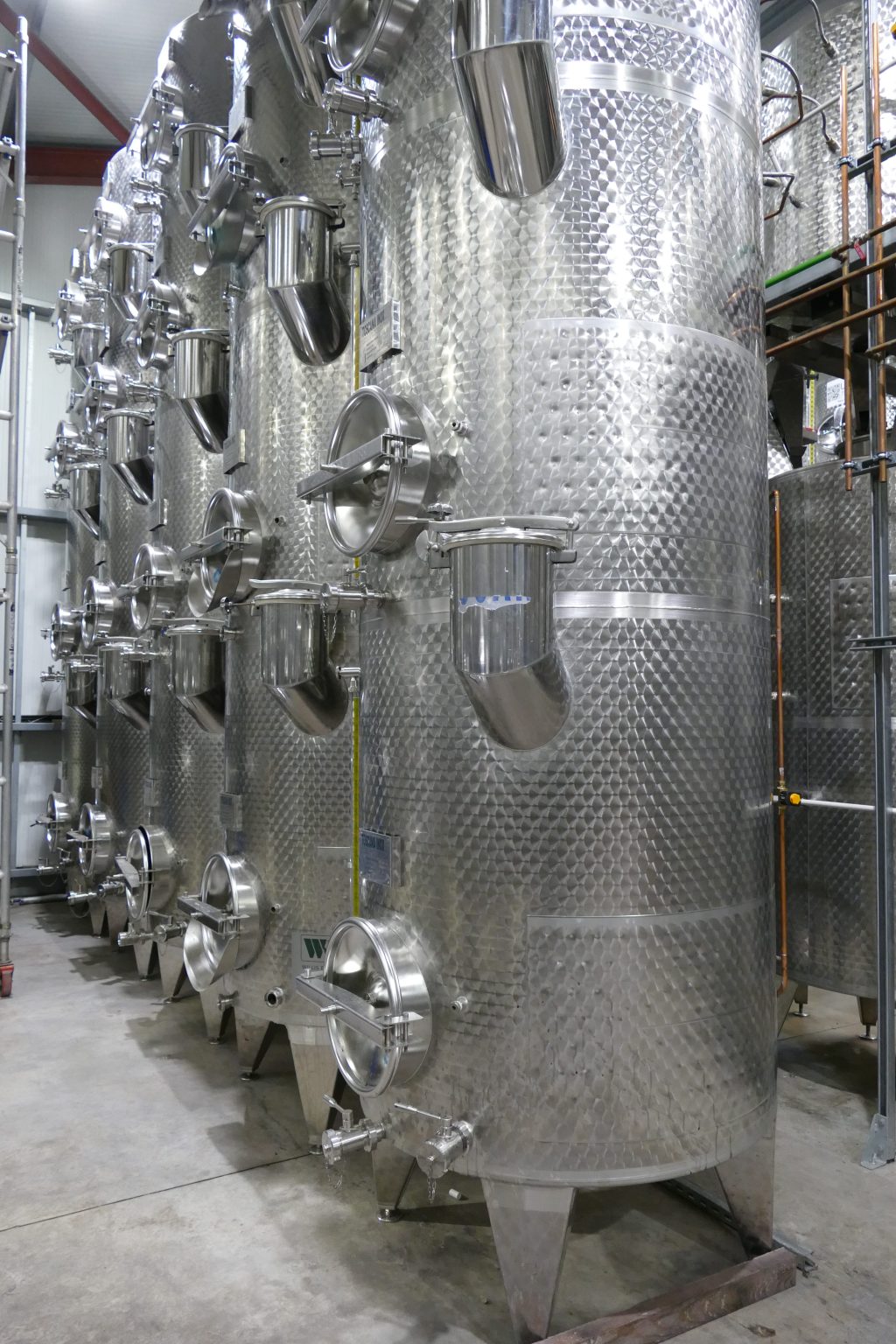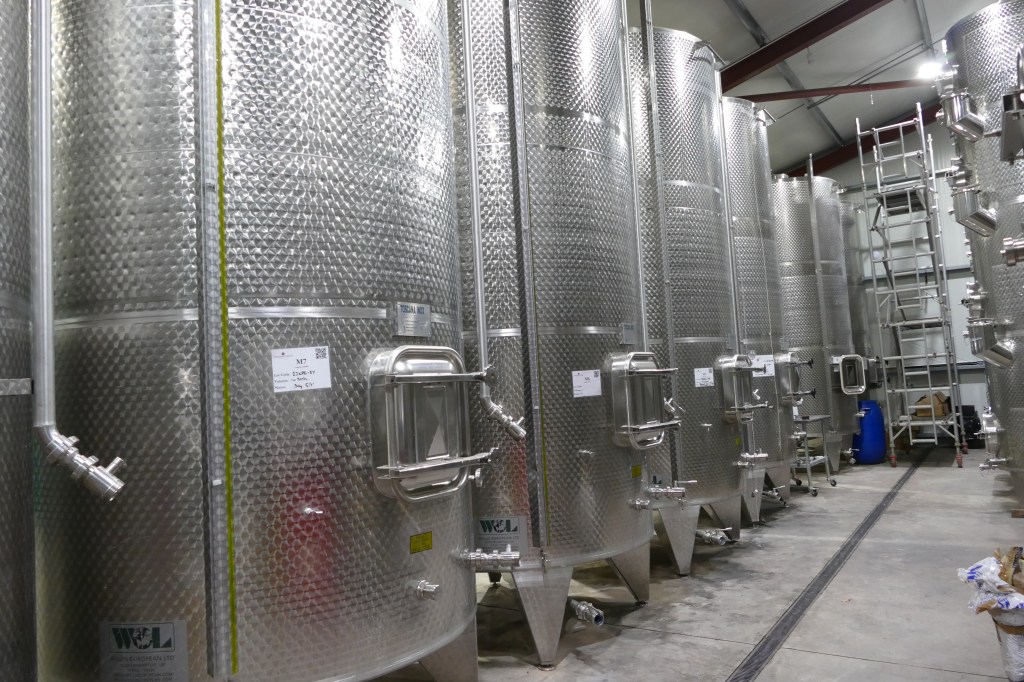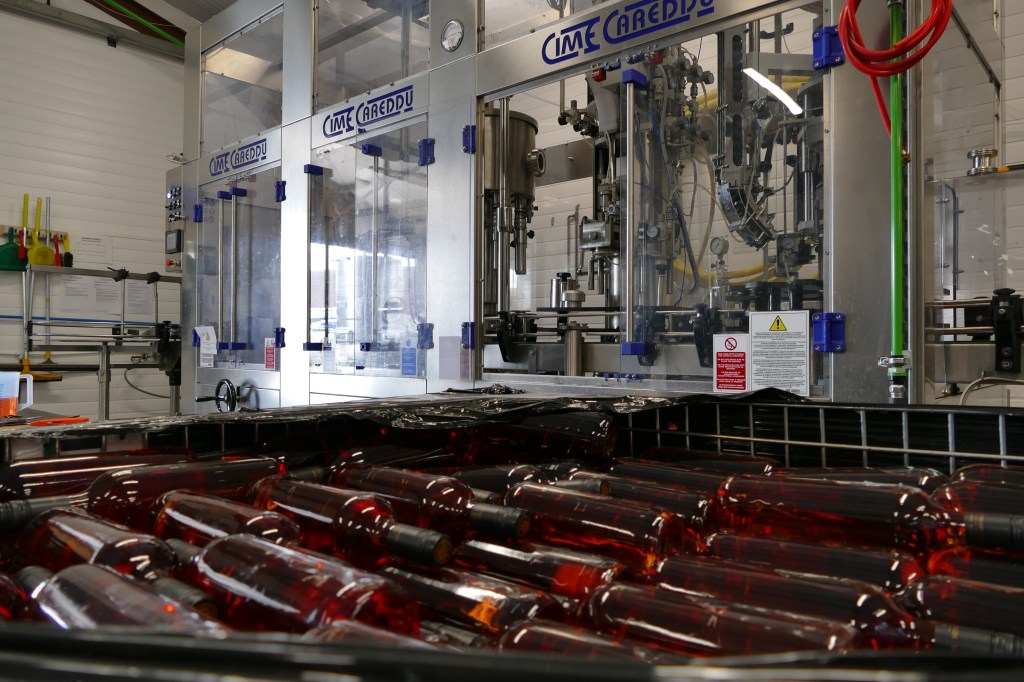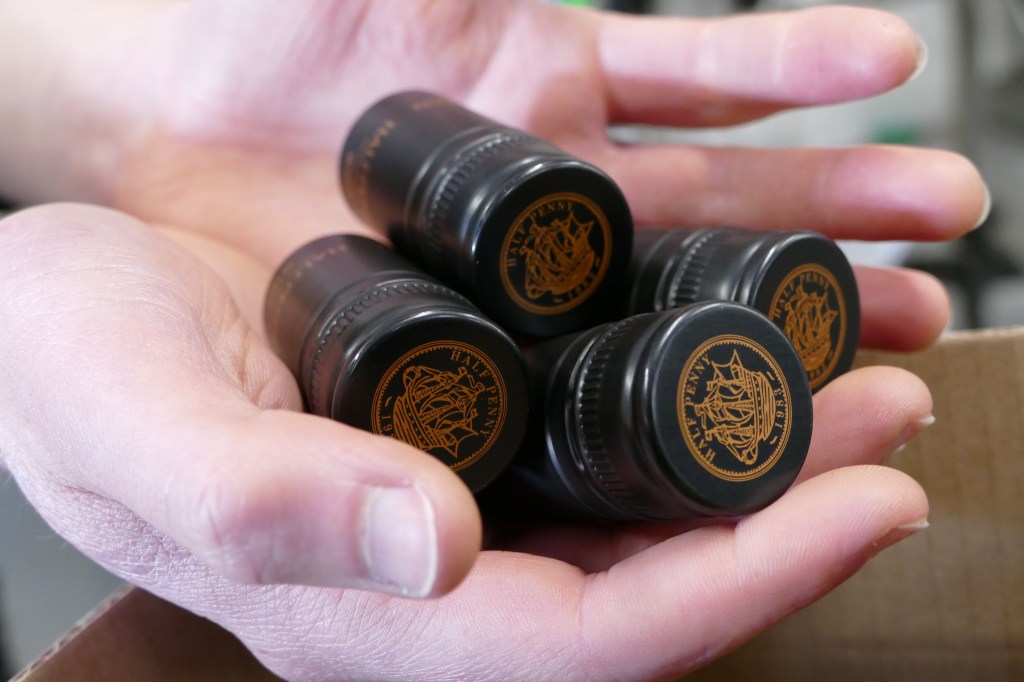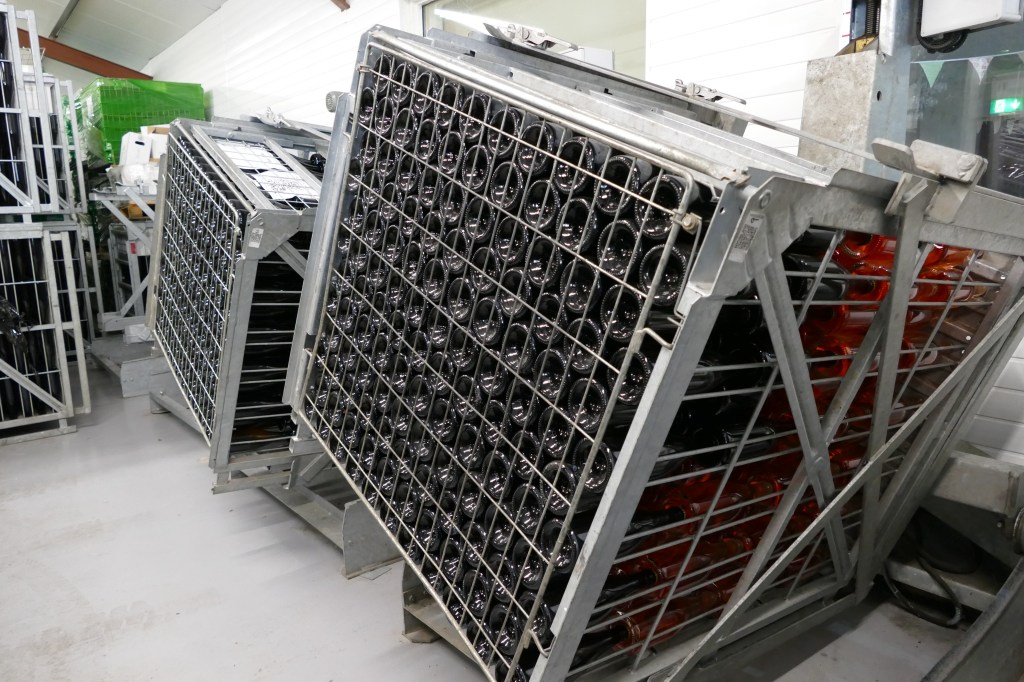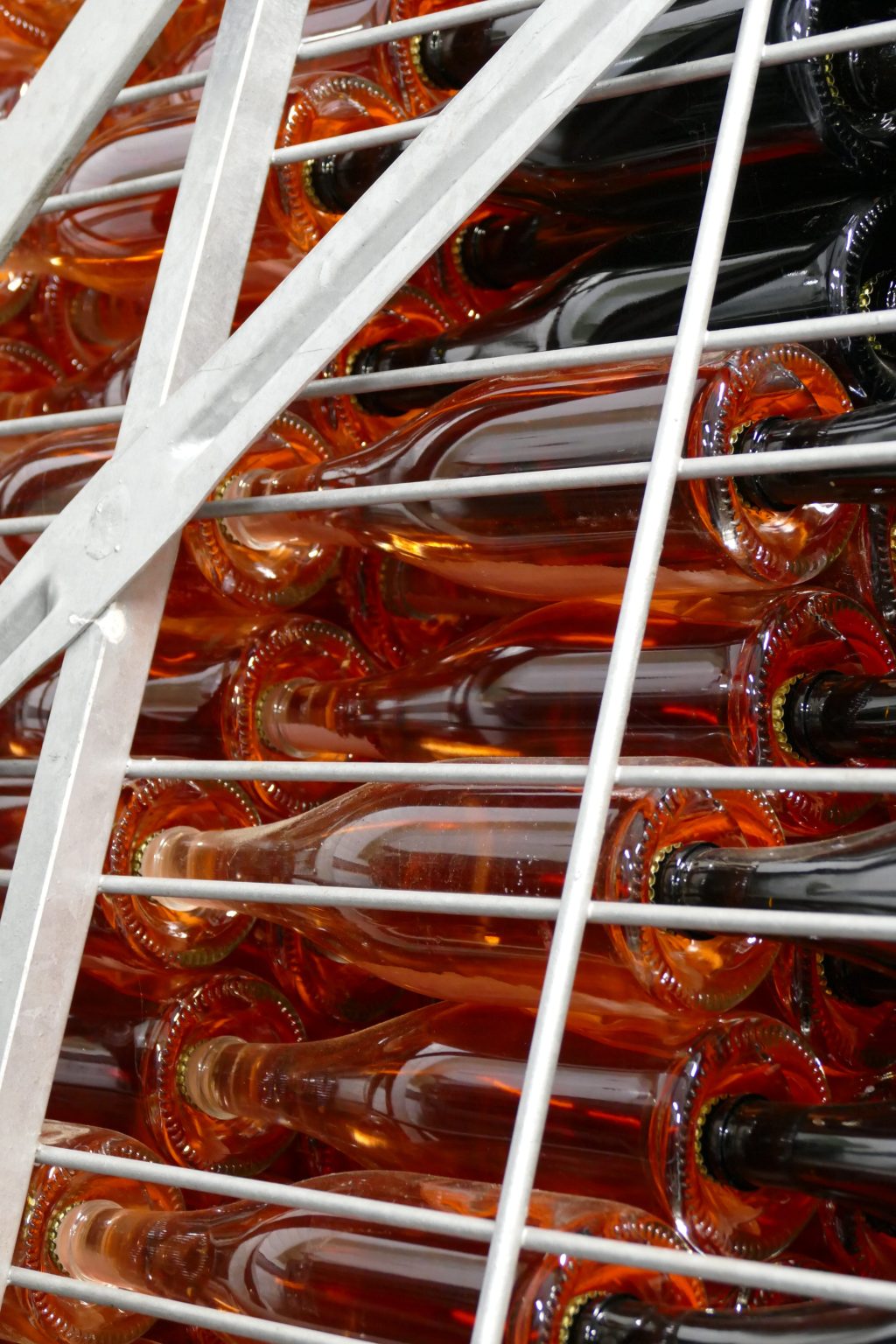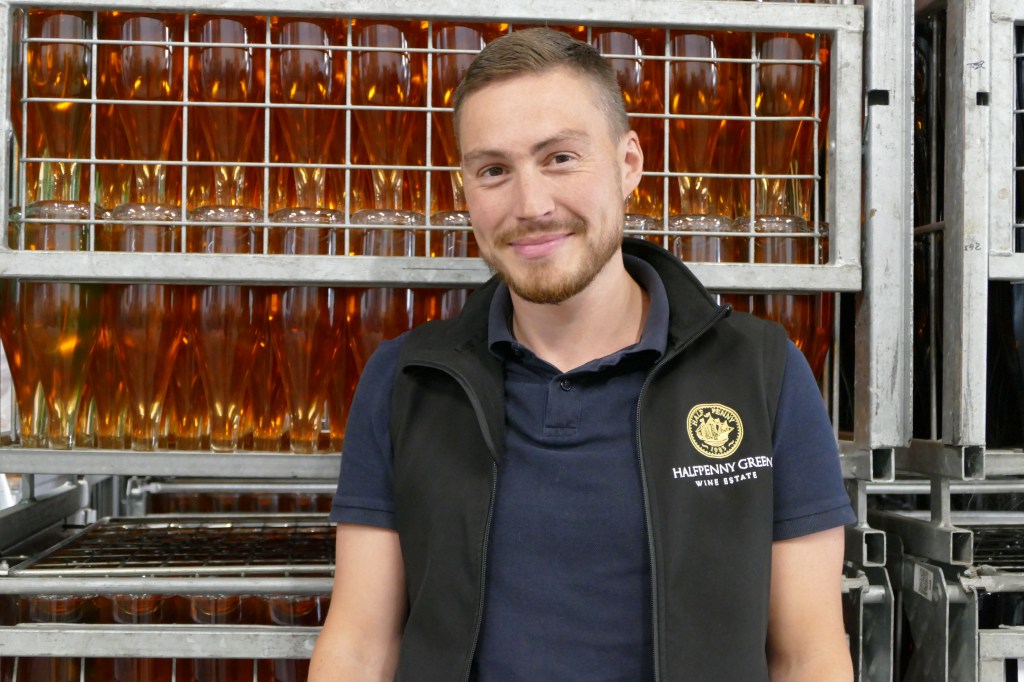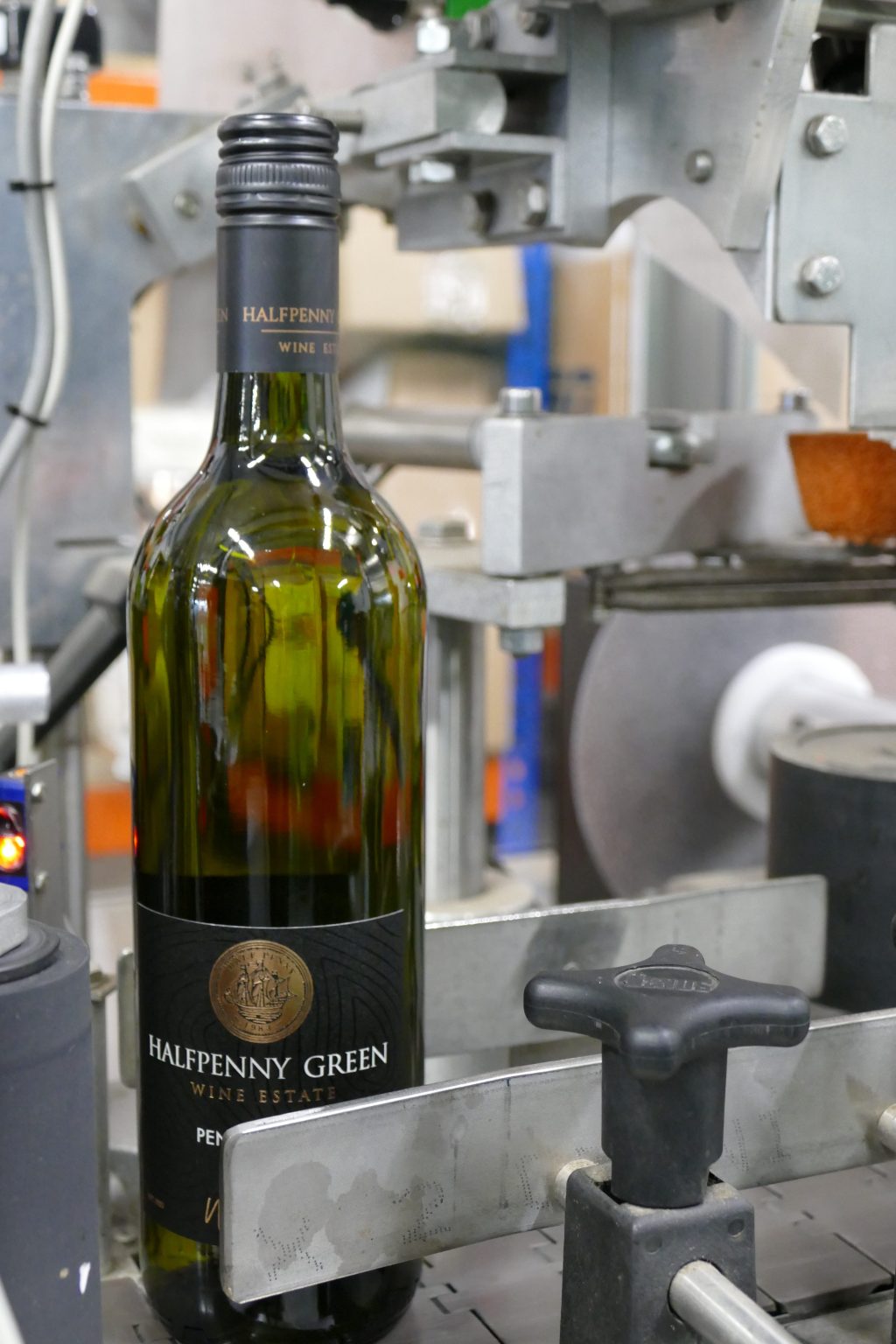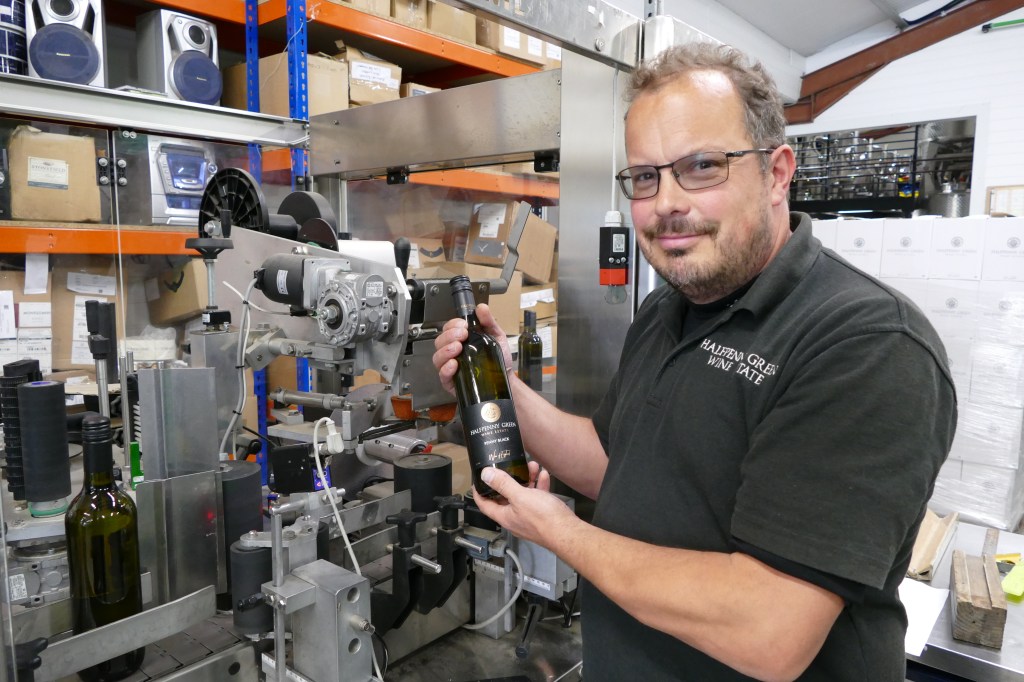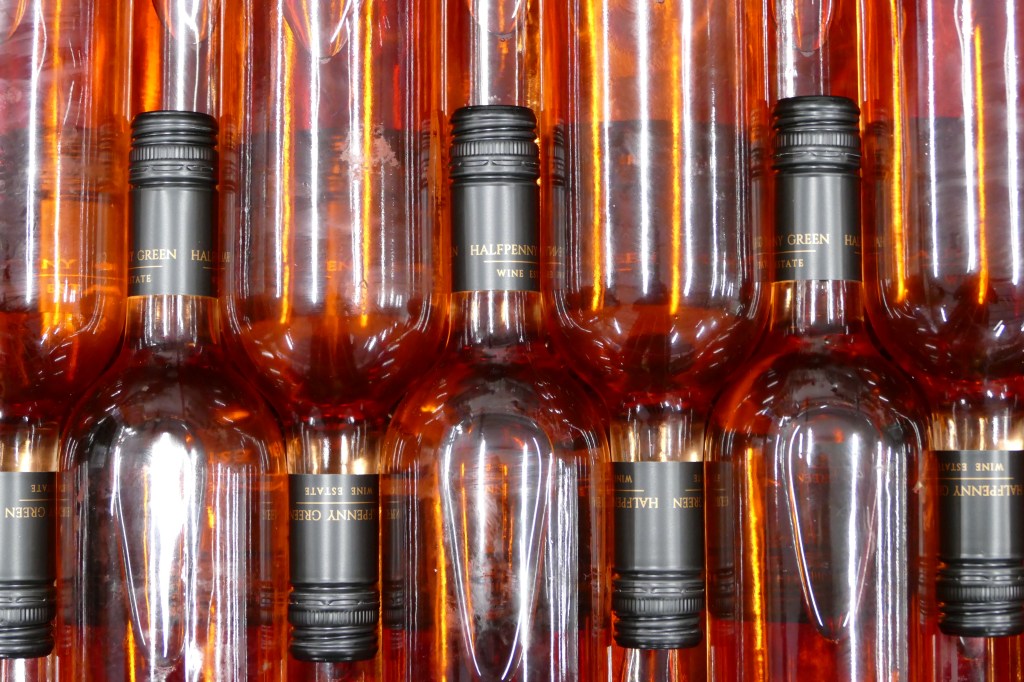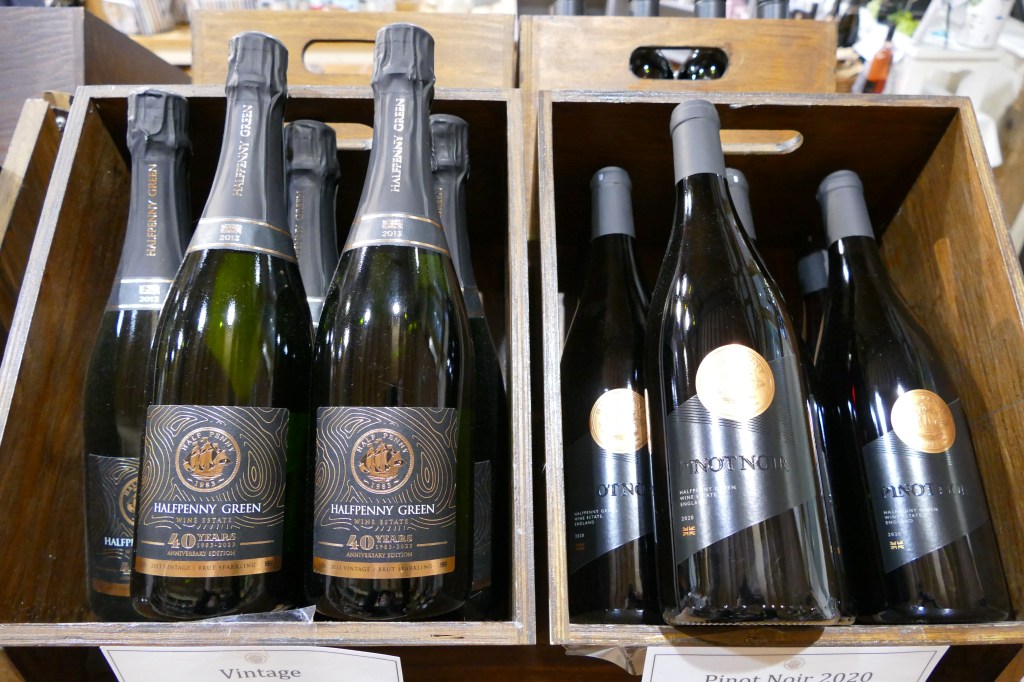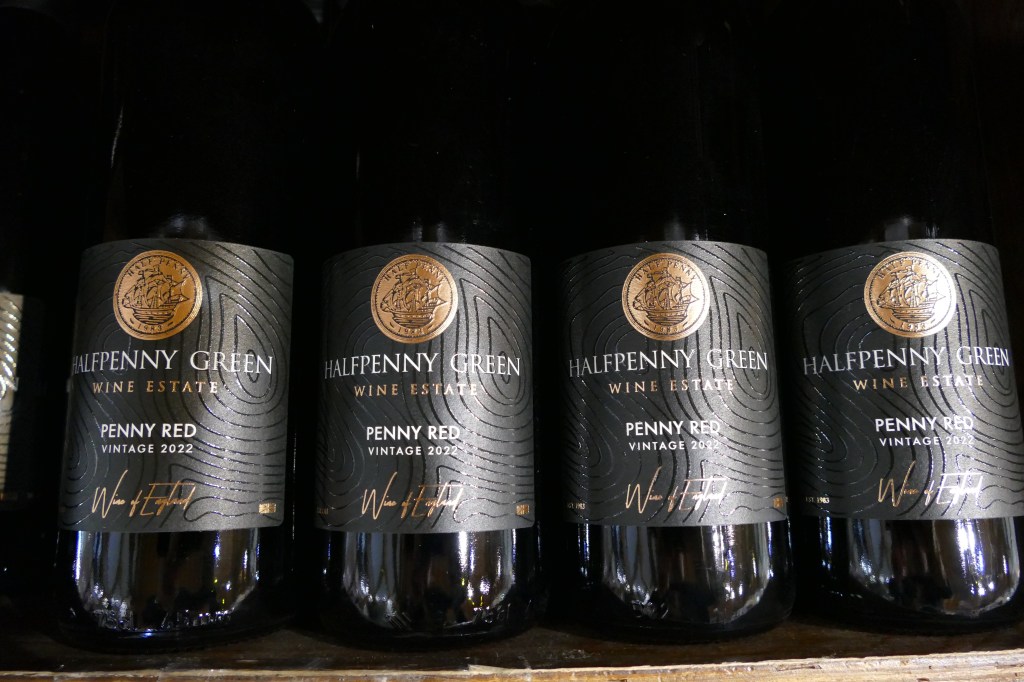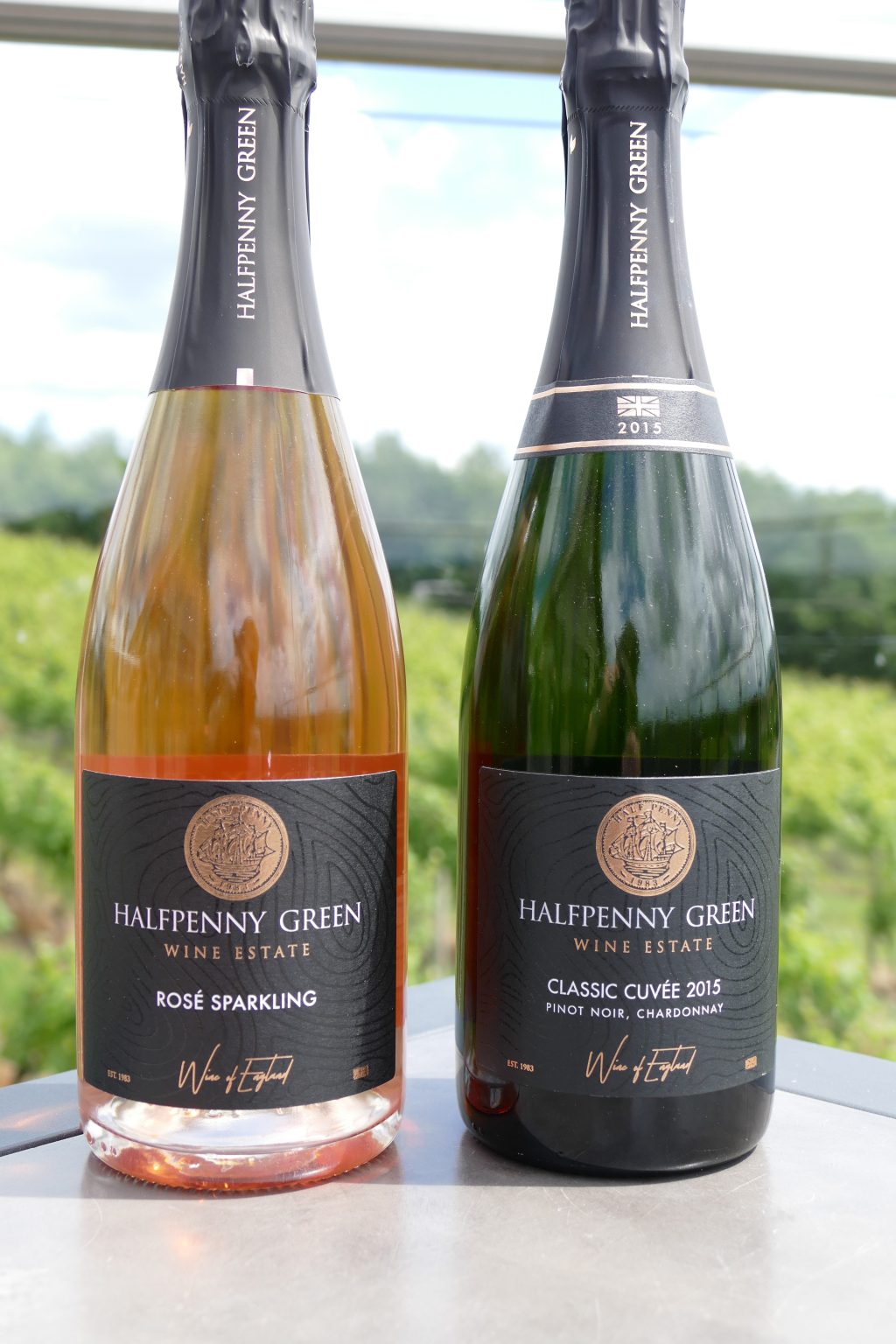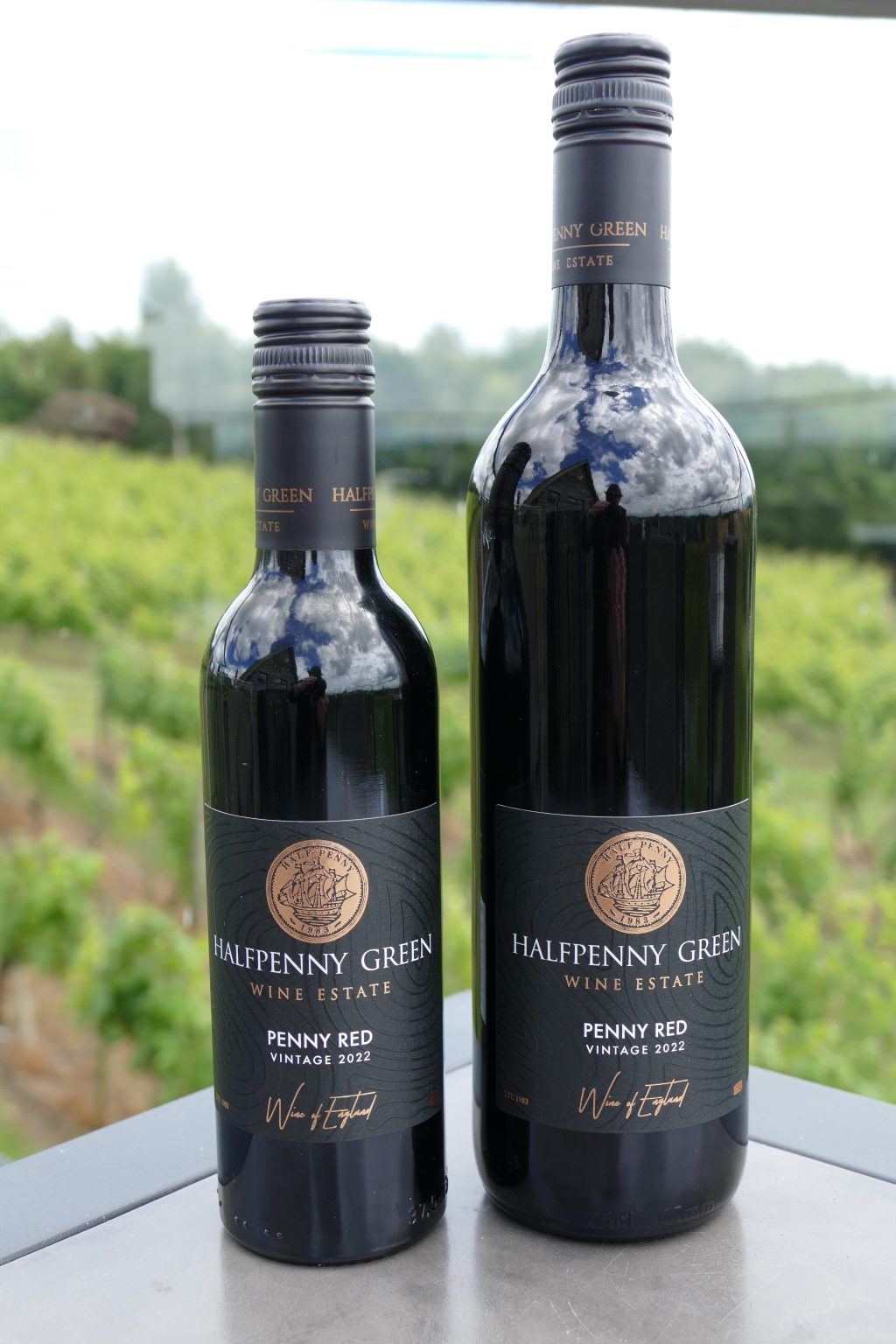Alongside 30 acres of vines on site there are also 70 acres of vines under grower contract and with over 100 contract customers there is always wine related activity at Halfpenny Green.
Martin Vickers took the bold decision to plant the first vines at Halfpenny Green, Staffordshire in 1983 and forty years later is still heavily involved in the vineyards at Halfpenny Green. His invaluable experience is also available to contract winery customers and Martin is often on the road visiting vineyards around the country.
The original vineyard planting has increased over the years both in size and in the varieties that are planted. An example of how Halfpenny are constantly looking to improve and innovate is the 3 acres of Divico planted onsite. Several years ago Martin Vickers went to Switzerland as part of a NIAB group to investigate this grape variety which has greater resistance to disease than many of the older varieties. “As a grape variety it has a better tannin structure than Rondo,” explained Clive Vickers Head Winemaker at Halfpenny who is also Martin’s son. The Divico grapes now form part of the Penny Red blend that has been so often praised by Matthew Jukes in the pages of Vineyard. There are between 40,000 and 50,000 bottles of Penny Red produced each vintage and according to Clive these are always sold out.
Martin explained that the vines at Halfpenny are now ripening around two weeks earlier than when they were first planted. “My records show that in 1998 the start date for the picking of the Madeline Angevine was the 15 October,” said Martin.
This inevitably leads to a conversation about frost and how that may affect the vines. There used to be potatoes on the farm and experience here has helped form decisions regarding frost explained Martin. As an example of how important it can be to know the history of your site Martin said: “The records show that the site had an air frost on 1 June 1976 where the temperature dipped to six degrees below freezing and in 1993 there was an airfrost in September.”
One frost mitigation technique has been to spur prune the Rondo to ensure that the vines don’t emerge too early. The site was heavily affected by frost in 2020 “The lockdown meant that the skies became very clear and this allowed frost into the vineyard and caused significant damage,” said Martin.
The vineyard has bare earth below the vines and this is partly to help the grapes achieve optimum ripeness, however “there can be a significant temperature difference between the inter row where the grass traps cold air and the bare undervine area which can be several degrees warmer,” explained Clive. “Although dad was the one who planted the vineyard I actually dug the holes,” said Clive laughing. There was a slight note of nostalgia in Clive’s voice when he declared that he missed driving the tractor around the family farm. Clearly life is busy at Halfpenny Green and “in the last 15-20 years there has been no chance to slow down,” said Clive.
“The first vintages went to Three Choirs vineyards,” explained Clive. As the harvests became bigger it became clear that Halfpenny would need an onsite winery. Lisa VIckers runs all the onsite facilities such as the function room, restaurant and shop and the amount of forward movement that has happened at Halfpenny is highlighted, once again, as Lisa Vickers pointed out that the early winery is now home to just the butchers and deli counter, revealing a scale of growth that is more than slightly breath taking. Clive and Lisa have been married for over twenty years and their complimentary skill sets have enabled this incredible growth across a diverse range of interconnected enterprises.
“Martin Fowke at Three Choirs was (in the early years) the consultant at the onsite winery and I just loved working with him,” said Clive and his passion for the winemaking process has not diminished with the winery now covering 30,000 sq ft.
The winery team is headed by Ben Hunt who has childhood memories of shovelling grape stalks at harvest. “I have always loved the process of producing wine,” said Ben. “The best part of the job is to see our contract customers have their wines back in the bottle ready for sale,” he added. I independently asked both Ben and Clive what is their favourite grape variety to work with? Both unhesitatingly replied “Solaris.” Ben explained: “As a variety it offers unlimited blending options with very little winery interference.” As evidence of this versatility an oak aged single variety Solaris wine is produced under the Halfpenny label and wines produced for clients using Solaris include rosé blends. “One of the more difficult varieties to work with is Phoenix because it is hard to keep clean from the point of fermentation, it is also harder to blend,” said Ben.
Expansion is a continual process at Halfpenny and with all the roof space on the winery site Clive employed Harvest Green Developments to make the most of this space by installing a new solar power system that has allowed the winery to significantly improve its carbon footprint.
Harvest Green Developments supported Halfpenny Green Vineyards to install a 206.15kW Solar PV system alongside a substantial grid upgrade to allow the winery to significantly grow upon its operations onsite, previously limited by two small low voltage electricity supplies. The Solar PV system has been installed upon the main winery building and will generate approximately 40% of the winery’s power needs annually, by generating 168MWh of electricity from 518 photovoltaic modules.
“The initial challenge to growing the amount of renewable energy on site was due to the two small 400V power supplies on site, which were simply not capable of allowing a large system to be installed on site. Harvest Green supported Halfpenny by applying for a much larger 315kVA/400V connection to be installed, which would allow us to deploy the larger Solar PV system that Halfpenny desired on site. We also carried out structural assessments of the roofs in order to protect the structural integrity of the buildings. We then deployed the Solar PV system across multiple roof elevations (eight in total) via a fully optimised system, comprising Trina Solar modules, SolarEdge optimisers and inverters and K2 Systems mounting kit. We also renovated a 20kW system installed in 2015 to bring it back into full working order.
“We are very proud to have supported Halfpenny Green Vineyards with the Solar PV installation as it marks a substantial effort towards decarbonising the Vineyard whilst simultaneously substantially reducing their running costs,” explained James Clifford, Business Development Director at Harvest Green Developments.
Since its installation the predicted number of years for the system to cover its initial expense has more than halved. “This is extremely impressive,” said Clive as he proudly showed us what the solar was generating at that very point via an app on his phone.
Forward planning and continual improvement is not just about buildings and storage but is in evidence everywhere at Halfpenny. A new nitrogen production plant means that Halfpenny are able to produce this vital resource when needed and are able to cut down on deliveries and collection of bottles reducing the impact on the environment and the amount of traffic on the site.
Winery flow is something that is constantly under review at Halfpenny. “We riddle 2000 bottles a week and by 2025 that will need to be 4000 bottles and we also take delivery of 26 pallets of bottles each week,” said Clive. With such a busy schedule sometimes the small things can be incredibly disruptive and as an example Clive points to a new label store in the winery. “Running out of labels can mean downtime for an entire team,” said Clive. This attention to detail is what allows Halfpenny to work with so many producers.
The winery is in the process of building a new press area that will be ready to accept grapes for the 2024 harvest. “When we built the original pressing area we thought it was big enough,” said Clive. Currently the winery has three presses with a new press soon to be delivered. The new Puleo press (supplied by Willis European who are the newly appointed sole distributor for Puleo in the UK) will be capable of receiving six tonnes whole bunch or 18-19 tonnes of crushed fruit. The new pressing area will help the flow of the winery at harvest.
With a winery capacity of 1,000 tonnes, harvest is a time of extreme pressure for the winery team with over one hundred contract winemaking clients delivering grapes “even dad has to book a slot for the delivery of the vineyard grapes,” said Clive with a glint in his eye.
The fruit all arrives at the winery and Clive is on hand to ensure all fruit is delivered safely to the press. The juice is pressed through the night but “the next day that juice needs to be moved on which means there needs to be enough equipment such as pumps and pipes along with the staff to run them,” said Clive.
Tank capacity is increasing every year “I can’t remember how many tanks we have put in,” said Clive with a refreshing air of honesty. Individual tank capacity varies from 400 litres up to 10,300 litres. In order to fit the specific needs of the winery for 2023 Halfpenny took delivery of ten tanks, that Clive had designed himself with the help of Willis European Ltd, UK agents for Toscana Inox. The tanks have a special access point to allow them to be topped up with ease. The winery is currently waiting for a further 20 tanks to be delivered. “We buy all our tanks through Tim and Nicky Willis at Willis European Ltd, a company that we have a long standing relationship with,” explained Clive. “All our tanks are Toscana Inox,” explained Clive. “The bespoke side for us is really important, because every winery is different. To be able to ask Willis European for just what we wanted such as the multi compartment tanks was key and allows us more wine making scope,” he added.
Wine quality is something the whole team are passionate about at Halfpenny and it increases with every vintage. Halfpenny are dedicated to making every bottle the very best that it can be. Clive highlights the peristaltic pump that the winery uses to ensure that the finished wine is treated as softly as possible. At the point of manufacture and development these pumps were tested with live fish and they passed through the whole process unharmed. As Clive is showing the latest equipment that the winery uses including the new laboratory facilities Lisa quipped: “Every time I come into the winery there is a new piece of equipment.”
A business with such an extensive reach is bound to encounter difficulties along the way. One of the difficulties that Halfpenny has faced indicates that the demand for English and Welsh wine continues to be healthy. “The disgorging schedules keep stepping up as clients run out of a vintage,” explained Clive. With so many client’s wines stored it becomes obvious that locating and removing clients wines outside of the regular calendar schedule is a bit like solving a Rubik’s Cube. What is problematic for Halfpenny is a positive for the industry.
Other difficulties also reflect the passion that Clive has for both the industry and the individual clients of Halfpenny. “We now make 250 wines across 28 counties from countless grape varieties in just one year,” explained Clive and it is clear that he feels the weight of this responsibility. “I never want to let anyone down, but we have increased the minimum delivery batch for new clients from 500kg to 700kg,” he said.
Vineyards are a long term investment and Clive is very aware of the need for the support for vineyards and winemakers to continue in the north of England. Clive and Lisa have two daughters both of whom attend Harper Adams University and Halfpenny Green have helped to plant a student vineyard at the University. It will mean that England will have a second centre that will be able to offer hands on experience for vineyard courses.
Well trained new entrants to any industry are vital and Halfpenny have many students working in the winery each year. “Bringing students into the winery brings with it a constant flow of new ideas,” said Clive. Innovation and new ideas have to be balanced with patience and practicality “coming into the winery from a book learning aspect can sometimes lead to a tendency to want to tinker with too much, too quickly,” he said. There can be no doubt however that working in the winery at Halfpenny Green offers a depth and breadth of experience in one year that may not be seen in other places across 20 vintages.
One experience that proves a challenge for the winery team is the co-operative grape schemes that Halfpenny have undertaken. Many amateur gardeners have vines that produce fruit from varieties that are only suitable for winemaking. Thanks to the collaborative efforts of Halfpenny and The Urban Wine Company these grapes are now able to fulfil their wine dreams and are made into a rosé wine that is then purchased back by the members of the co-operative at less than five pounds a bottle. This scheme has been extended to now include a co-operative from Oxfordshire and Buckinghamshire and also a midlands co-op. “The wine produced is always a rosé because as you can imagine the grapes are of differing varieties and ripeness, we don’t know what we are getting,” said Clive. For the winery team this provides valuable experience in correcting wine faults and balancing acidity levels and there are on average between 14,000 and 15,000 bottles produced. The scheme is extremely popular with all those who are a part of the chain. When discussing this scheme it is really obvious how much Clive loves not only the whole process of winemaking but that he loves the connection that he as the winemaker has with those who enjoy the wines that are made at Halfpenny.
“There is a population of six million living within a one hour drive,” explained Clive. The location of Halfpenny Green makes it ideally suited to offer wine experiences such as tastings and self guided tours. The tour travels around the different field plots and utilises the historic names of the fields “these names go back generations so it made sense to incorporate them into the vineyard,” said Clive. Education is such an important part of the English and Welsh wine stories and Halfpenny Green are working very hard in this regard.
Tastings are available seven days a week and the onsite restaurant, shop and deli ensure the wine tastings can be accompanied by cheese boards “running wine tastings brings in younger people,” said Clive.
The restaurant and shop has also expanded over the years. Lisa explained: “I first took over the shop and restaurant in 2000. The takings doubled in the first year and then doubled again in the second year.” One of the popular options in the restaurant is the high tea and Lisa explained that this is popular for all sorts of occasions from mother and daughter afternoons to birthdays and anniversaries “I love to see people happy,” she said. The shop offers a bespoke hamper service which, perhaps as should be expected, becomes exceptionally busy just as harvest ends.
Great wine is central to the heart of all the operations at Halfpenny and the site is always busy with something to offer to everyone. There is a diverse range of additional points of interest and fishing lakes add to the stunning views from the tasting room balcony, alongside a craft village and there is even a wild animal zoo on site.
One last question concerns the name Halfpenny Green. “The name is taken from the local hamlet,” said Clive. I ask how the name is pronounced? “It depends how old you are,” said Clive with a laugh. With this remark Clive is referring to the history of the Halfpenny coin examples of which have been found dating back to the time of Henry I. The pre decimal coin was known as a “ha’penny” and the post decimal coin ceased to be legal tender in 1984 with the last minting for circulation in 1983 the same year Martin Vickers planted the original vines at Halfpenny creating what can only be considered an agreeable symmetry. What is clear however, whether it is known as ha’penny or Halfpenny Green the business is moving into the future whole heartedly.
- Martin and Clive Vickers
- Tank cleaning is constant at Halfpenny Green
- Clive Vickers with the new custom designed tanks
- Cime Careddu bottling line, supplied by Willis European – 1,500 bottles per hour and has the capability to apply corks and ROPP aluminium screw caps. The line is fitted with extended guarding to house a HEPA sterile filtration system to ensure a clean environment while filling
- Ben Hunt
- There are 432,000 bottles of Halfpenny own label wines in storage along with wines from over 100 contract winemaking clients. The warehouse manager Simon Bayliss therefore has an immense task to keep everything running smoothly
For more like this, sign up for the FREE Vineyard newsletter here and receive all the latest viticulture news, reviews and insight

